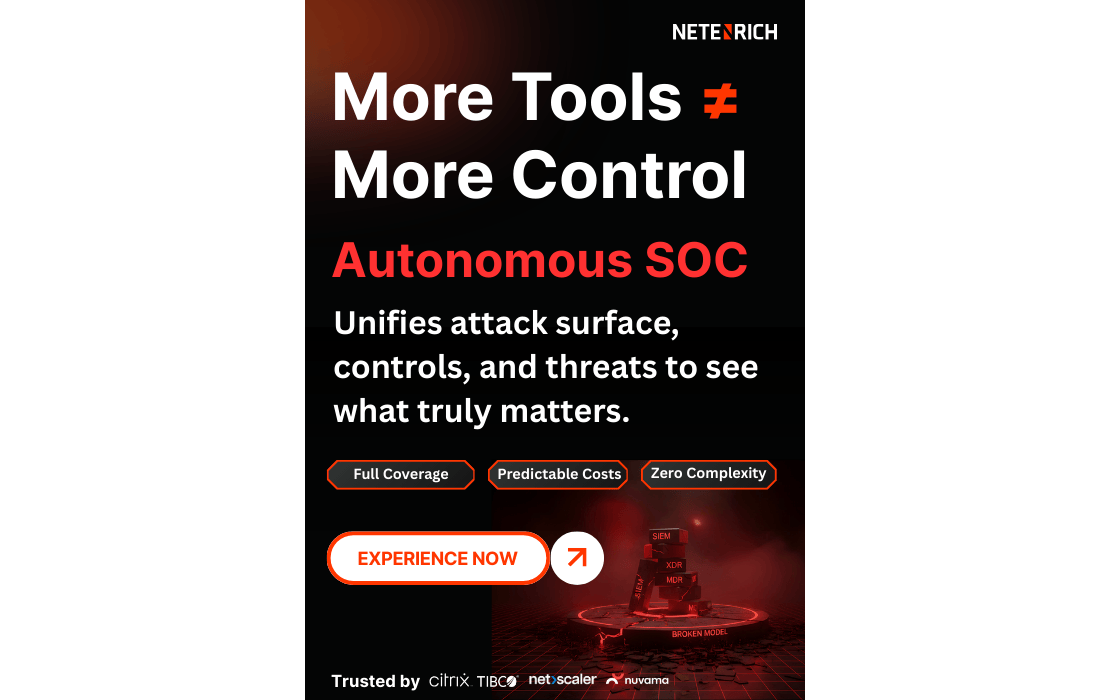Is Your SOC Stuck Reactive? Shift to Proactive Threat Hunting
Published on November 11, 2025 | Last updated on November 12, 2025 | 5 min read

Key Takeaways
- Effort isn’t the issue. Most SOCs are buried under alert storms and constant fire drills, no matter how hard the team works.
- Reactive security is necessary but insufficient. It can’t be your whole strategy anymore.
- Proactive hunting is the difference. It’s what turns security from waiting on alarms to spotting threats that matter before alerts miss them.
- Hunting needs support in the form of mindset, skills, and the right tools.
Security Operations Centers (SOCs) are busier than ever. However, are they more effective? Alerts pile up, queues grow, and teams work nonstop just to keep pace. It looks productive, but in reality, it’s exhausting.
Stuck within this reactive loop, CISOs find very little time to action strategic changes. Due to this, real risks slip by, improvements stall, and teams burn out.
But there is an alternative: Proactive threat hunting.
Instead of waiting for alarms, this method suggests that teams go testing, probing, and uncovering issues before they escalate. The result is a SOC that shifts from firefighting to resilience, from chasing noise to staying ahead.
Reactive SOC loop of alerts and triage vs proactive SOC loop of hypothesis, hunting, and posture improvement.
Why Reactive Security Isn’t Enough
Illusion of safety: On the surface, reactive security looks logical. An alert fires, the team responds, and the case gets closed. But attackers often hide beneath this surface. Reactive models miss the connections across assets, controls, and threats. Without this context, risk looks smaller than it really is. Most SOCs fail to connect assets, controls, and threats in a unified context. The result is fragmented visibility and reactive cycles that never close. Teams keep responding to symptoms instead of fixing the cause.
Attackers Don’t Wait for Alerts: They slip in quietly, blend into traffic, and by the time a “critical” alert appears, the damage may already be done.
Busy ≠ Effective: Closing tickets creates the illusion of progress, but doesn’t answer strategic questions like: Are we covered? Where are the gaps? What would happen if a critical system went down right now?
The Human Cost: High churn not only drains employees but also makes teams even more dependent on reactive tooling. The human cost of this cycle is immense. Burnout erodes institutional knowledge, weakens resilience, and leaves gaps that tools alone can’t fill. In fact, according to Tines’ research, 71% of SOC analysts report burnout, with many considering leaving within a year.
As one CISO put it during a roundtable in September 2024: “Attack flow is a sequence of behaviors. So, looking at one alert alone… we correlate, but what if we start correlating behaviors instead? Suddenly, you see patterns you’d never catch with single alerts.”
Strong SOCs don’t settle for that. They hunt, anticipate, and shift security from endless defense to a source of confidence and resilience. In today’s threat climate, staying proactive is the only option.
Threat-in-a-box: What does proactive threat hunting look like?
Proactive threat hunting flips the traditional SOC model, where analysts wait for alerts. Instead of sitting back, they go searching: What might we be missing? Where could someone hide if they were already here? It’s a shift in mindset, and you can dive deeper into this approach in our CISO Playbook: From Alert Fatigue to Proactive Security
We've defined this in a step-by-step guide that demonstrates for practitioners what a high-impact hunt looks like.
- Every hunt starts with a hypothesis:
“For instance: An attacker could be using legitimate remote access tools for lateral movement, blending in with admin traffic.” - Define hypothesis: Once you have defined your hypothesis, check for anomalous activity, e.g., suspicious remote access logins.
- Collect data: Review VPN logs, RDP connection logs, and PowerShell Remoting logs. You could include Windows event IDs 4624 (successful logon) and 4625 (failed logon)
- Define what you must look for. Pinpoint unusual activities that are most relevant for a business. For example:
- Logins from unusual countries or IP addresses not normally used by your workforce
- A spike in activity outside of standard business hours
- Remote sessions initiated by service accounts or other non-administrative accounts
- Run queries: Flag logins from unusual geo-locations or those done during odd hours.
- Analyze deviations: Compare unusual behavior (suspicious) against normal employee work patterns.
- Normal: Admin logins from known jump hosts during work hours
- Suspicious: New IPs, repeated after-hours logins, or a sudden spike in failed + successful attempts
- Take action: If suspicious, verify with the user, reset credentials, and check for follow-up actions like privilege escalation. If benign, add to your baseline so future hunts are cleaner.
Frameworks like MITRE ATT&CK provide structure, ensuring hunts cover known adversary tactics. Each hunt becomes a feedback loop. Gaps surface, posture improves, and defenses sharpen, making the SOC smarter.
What skills and tools are required?
Alerts swamp most SOCs, and adding more tools cannot solve the problem. Without the right skills, even advanced platforms become just another set of dashboards. Here are the core skills and tools every SOC needs to succeed:
Core Skills Every SOC Needs
- Threat-hunting mindset: Analysts must proactively watch out for subtle attacker activities instead of waiting for alerts.
- Incident response discipline: Well-defined playbooks and cyclical workflows ensure fast, coordinated action under pressure.
- Forensic investigation: Teams must be able to check for attacks across endpoints, networks, and even the cloud to uncover root causes of threats.
- Adversary emulation: Understanding attacker tactics helps analysts think like them and spot gaps before they are exploited.
Core Tools Every SOC Needs
- Centralized visibility: A unified platform that has access to data across all network assets, cloud, and endpoints to eliminate blind spots.
- Automation and orchestration: Automated workflows can handle repetitive tasks so teams can focus on higher-value work.
- Endpoint detection and response: Continuous monitoring of endpoints and workloads that catches lateral movement early.
- Metrics and measurement: Dashboards that show not just alerts closed, but coverage achieved and risk reduced can help make monitoring more efficient.
Effective hunting needs all three: mindset, skills, and tools. Miss one, and you slip back into firefighting. Get the balance right, and you’ll spot tomorrow’s threats instead of chasing yesterday’s alerts. As discussed in a CISO roundtable in December 2023: “Granular data tagging and enrichment enable proactive hunting for patterns across large datasets.”
How does Netenrich Adaptive MDR enable proactive hunting?
Most SOCs want to hunt, but often they can't because they lack the bandwidth, visibility, and expertise. Too many alerts, not enough people, and never enough time leave even the best teams stuck in an endless triage.
This is what we call Automating the Known, letting machines resolve repetitive detections so analysts can focus on the unknown: novel adversary behaviors, hypothesis-driven hunts, and posture improvement.
That’s where Netenrich's Managed Detection and Response (MDR) comes in. With its foresight and context, it:
- Offloads noisy triage: handles routine investigations and false positives at scale.
- Extends analyst capacity: provides automation combined with expert human judgment.
- Enables structured hunts: deep telemetry, contextual intel, and curated playbooks help hunting become more adaptive and expansive.
- Aligns Attack surface, Controls, Threats (A.C.T.): By connecting these three critical elements in one platform, Adaptive MDR moves beyond simple alerts. It reveals systemic risks, so SOCs don’t just react; they see the bigger picture.
This matters because it turns detection into strategy: instead of closing tickets, teams can close the real gaps in posture. Backed by Netenrich’s engineering-led Adaptive MDR, hunts are continuously refined, so coverage keeps getting better over time.
What are the benefits of proactive detection?
Here’s what you gain when you shift from waiting on alerts to actively looking for threats:
- Early Threat Discovery: Spot unusual activity (odd logins, unusual traffic) before alerts fire, reducing dwell time and breach costs. Less dwell time means less damage, lower costs, and fewer breaches.
- Stronger Security Posture: Proactive detection also exposes what’s missing. Analysts uncover gaps in logging, weak detections, or broken processes that no dashboard would ever highlight. Over time, this becomes a feedback loop of hunting, learning, and improving.
- Human Impact: Burnout is real. Nearly three out of four SOC analysts say they feel it, and many think about walking away within a year. Hunting helps change that story. When analysts spend less time drowning in alerts and more time solving real problems, the job feels rewarding again. Energy comes back. People stay longer. Teams grow stronger.
- Business Value: A SOC that only reacts is seen as overhead. A SOC that hunts shows it can anticipate, adapt, and protect in ways that build confidence. This way, security becomes more trustworthy and credible.
Put it all together, and the story is clear: proactive detection doesn’t just stop attacks earlier. It creates stronger defenses, smarter teams, and a more resilient business. Right now, the difference between teams that are always scrambling and the ones that stay ahead comes down to this combination. For CISOs and boards, this shift delivers defensible, measurable proof of reduced dwell time, improved coverage, and consistent risk reduction, outcomes executives can track quarter over quarter.
Netenrich Adaptive MDR changes the math. It cuts through the noise, reduces grunt work, and gives analysts space to focus on the hunts that actually matter. Enriched telemetry and threat intel turn raw events into signals that actually make sense. Instead of chasing every queue item, analysts can test theories, connect dots, and fix real gaps.
With Netenrich's Adaptive MDR, resilience isn’t a slide in a deck. It’s practical, measurable, and something you can put to work right away. Want to view it in action?
References:
1https://www.tines.com/reports/voice-of-the-soc-analyst/
Related Articles
Subscribe for updates
The best source of information for Security, Networks, Cloud, and ITOps best practices. Join us.








